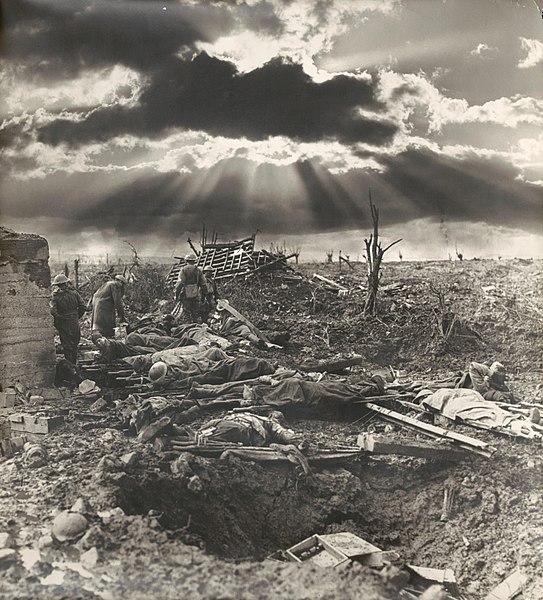James Park Woods was an Australian recipient of the Victoria Cross during World War I; the Victoria Cross was the highest award for gallantry in the face of the enemy that could be awarded to members of the Australian armed forces at the time. Woods enlisted in the Australian Imperial Force in September 1916 and, after training in Australia and the United Kingdom, joined his unit, the 48th Battalion, in France in September 1917. Along with the rest of his battalion, he participated in the First Battle of Passchendaele the following month. In early 1918, Woods was hospitalised for several months before rejoining his unit in May. He again reported sick in July, and did not return to the 48th Battalion until mid-August.
Woods c. 1918–1919
The morning after the First Battle of Passchendaele. Australian casualties can be seen around a blockhouse.
The Victoria Cross
A group of Australian VC recipients assembled in Sydney on Anzac Day 1938. Woods is front row, fifth from left.
48th Battalion (Australia)
The 48th Battalion was an infantry battalion of the Australian Army. It was originally raised in 1916 for service during World War I and took part in the fighting in the trenches of the Western Front in France and Belgium, before being disbanded in early 1919. After the war, the battalion was re-raised as a part-time unit based initially in Victoria and later in South Australia. In 1930 it was amalgamated with the 43rd Battalion and remained so until late 1939, subsequently being linked with the 10th Battalion in 1942. The battalion did not see combat during World War II, and after the war was re-raised as an amalgamated unit, again with the 43rd Battalion, in 1952. They remained linked until 1960 when the 43rd/48th Battalion was subsumed by the Royal South Australia Regiment.
Soldiers from the 48th Battalion before their final attack at Le Verguier, September 1918
Private James Woods, who received the Victoria Cross for his actions in September 1918.





